Search results
7 results found.
7 results found.
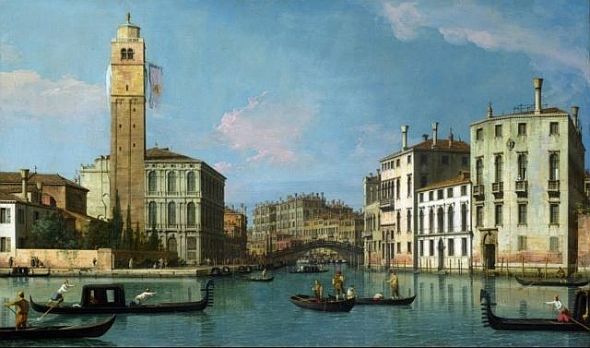
Before wristwatches, there were bells, usually in towers. But for the bells to be useful, somebody had to know what time it was, so a clock needed to be lurking somewhere — preferably attached to the bells. Of course, clocks didn’t have to have bells. But bells were irrelevant without a clock.
So if ingenuity appeals to you, I suggest you go to the church of S. Geremia, near the train station, to observe one of the oldest clocks in Europe; it is the still-functioning mechanism that kept their two bells ringing — with a 70-year interlude — ever since the 1500’s. (No, there doesn’t seem to be a definite date to the clock’s arrival; I have turned the booklet’s information inside and out, and now it’s my brain that feels like a piece of origami. So “1500’s” will have to do for now.)
(For those whose minds can never be at rest, let me add that the first public clock in Italy was installed in the tower of the church of Sant’ Eustorgio in Milan between 1297 and 1306.) (I will not be reporting anything about Sant’ Eustorgio.)
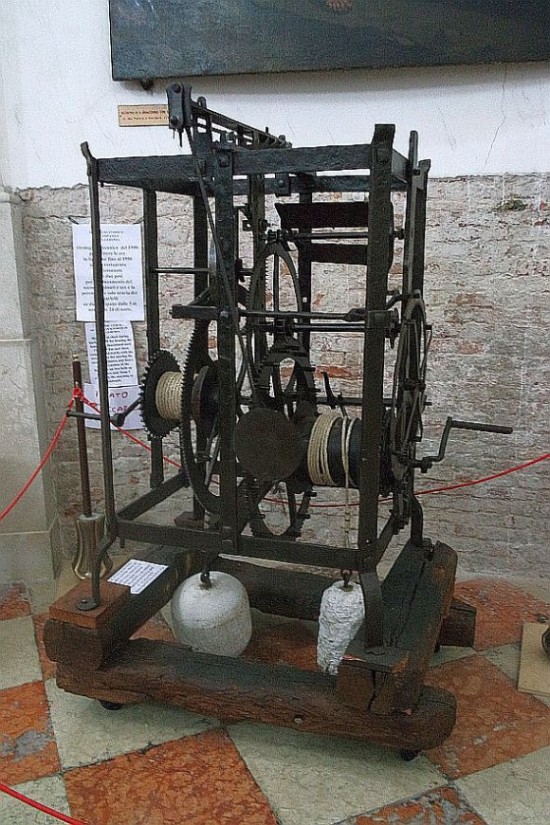
The tower of S. Geremia has a clock, but no clock-face. In fact, only a few churches in Venice whose bells still alert us to the time also display a visible clock. Clock-faces became common in the 1500’s, the result of I don’t know what impulse, because when you think about it, the striking bells told you everything you needed to know without a visual aid. The belltower of the church of the Carmini, whose bells told me the time for the ten years I lived nearby, has no clock face. I never thought about that till this moment. Just hearing the hour and quarter-hour struck was enough to keep me oriented over the course of the day (and night). But because somebody had to know exactly what time it was, there was a sundial, still visible, on the tower of S. Geremia, which enabled this person to calibrate the works, by hand, exactly at noon. I’ll explain the importance of that in a minute (sorry).
This mechanism is probably one of the simplest, but it still impresses the hoo out of me. Not being literate in the language of wheels — cog, fly, escape, Catherine — I’m not convinced that it was made by an engineer and not by an alchemist or general all-purpose thaumaturge. The important point is that it was maintained in working order till 1950. At that point it went into retirement, until a restoration project brought it back to life in 2015.


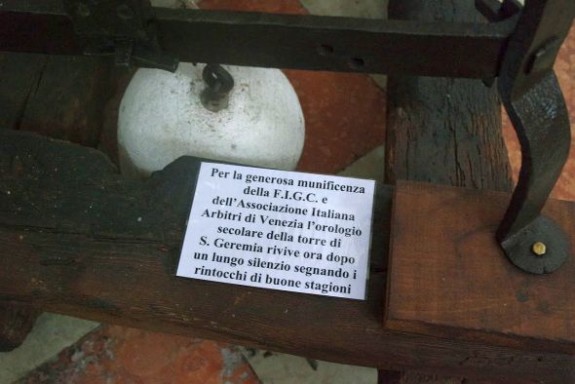
Venice was a city of towers and there were many more than there are today. In 1601, a certain Franz Schott, writing a guidebook entitled “Itinerario d’Italia,” stated that Venice contained 27 public clocks, and “towers for church bells 114.” Today, there are 84. We can thank Napoleon for this devastation.
Schott, being German, made those useful distinctions because they weren’t all clock-towers — some were watchtowers, or signal towers, or showing-off towers built by especially rich people.
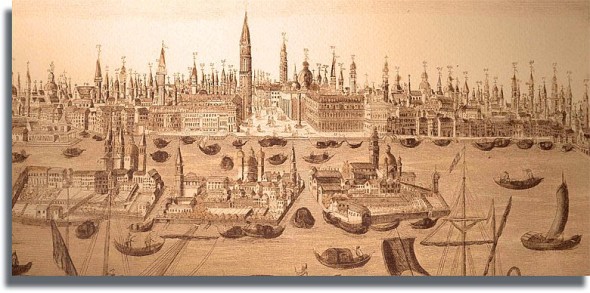
The need for clocks (have you never reflected on why there was a need for clocks?) seems to have begun in the Benedictine monasteries, to ensure the correct timing of the Liturgy of the Hours throughout the day — and night. But there was also a need for order in arranging the day’s activities out in the profane world, so people got used to organizing themselves according to the bells rung for religious purposes.
Here is how a typical medieval day in Venice rolled along, at least until the 1500’s, from the comprehensive booklet written by Francesco Zane (translated by me):
“Until the 1600’s the devout custom continued of following the divine offices during the night, and the doge never missed attending in his chapel, just as the Greek emperors (I presume he means Byzantine emperors) and the French and Longobard kings. (The “divine offices during the night” would have occurred at midnight and 3:00 AM. No wonder he dozed off in meetings.)
“As the sun rose behind the campanile of San Marco, at the sound of a bell each person got busy working, and seeing that the most numerous artisans were the carpenters, in Venice called marangoni, they named that bell the Marangona. The magistrates seated and the workshops already buzzing, not a few patricians … gathered at Rialto beneath the porticoes, which are to the right as you descend the bridge, for the sole purpose of seeing each other and talking together, while at the same hour and in the remaining porticoes (was) a crowd of merchants — Florentine, Genoese, Lombards, Spanish, Saracens, and of whatever nation of the world was involved in major business. They stayed there till noon, when it was time for lunch.
“…lunchtime was brief, only half an hour after noon had struck, when another bell … struck for a half hour calling everyone back to work, so that the entire time allowed for the pause was only one hour. When night fell, work and public business necessarily ended, but it wasn’t unusual whenever and where it was requested or needed that the magistrates would continue to work on state business.
If you’ve ever noticed the bell ringing every day at 2:00 PM from the campanile of San Marco, that was the signal ending the lunch break for the Arsenal workers.
“Finally, at the third hour of the night (Compline, or 9:00 PM), another bell was rung … after which you could no longer walk around the city … nor could you keep fires burning in shops and houses on pain of a fine of 100 soldi, by which provision the habitations, which were, for the main part, of wood, were preserved from fire. But in the 1400’s it was permitted for barbers and small food shops to remain open after “terza della notte” (6:00 PM).
All these are times that correspond to the canonical hours, which persisted till the 1700’s. Slightly confusing, because the day was considered to begin at sunset. “Prime” was 6:00 AM, “Terza” was 9:00 AM, “Sesta” was 12:00 PM, and “Nona” was 3:00 PM. Documents often refer to meetings and other events as occuring before or at or after a certain named bell. Everybody knew what “Nona” meant, just as I’ve gotten used to knowing what “Candelora” and “l’Immacolata” mean in terms of dates.

It fell to the bells to keep a city of 100,000 people functioning efficiently; the Venetian government needed to ensure that everybody knew what time it was, and S. Geremia was one of four churches which officially sounded the time for any governmental meeting, especially the Great Council. (The other official churches were the Frari, San Francesco della Vigna, and, of course, San Marco, all the highest towers in Venice and all necessarily synchronized, which is where the sundials came in.) Seeing that the Council numbered some 2,000 members who lived all over the city, these four strategically placed belltowers totally removed any chance for someone to arrive late saying he hadn’t heard the summons. Being sure of a standard citywide time enabled the office timekeeper to define what “showing up late” meant, which made it easy to impose the appropriate fine.
Out in the parishes, when the bells rang for Prime (dawn) every morning, the appointed persons would open the thousands of public wells, which had been covered at night. (Reports of the occasional suicide make it clear why this was desirable.) This practice was maintained, perhaps toward the end without the bells, until the acqueduct from the mainland was built in 1884.
Also at Prime, every day from 1516 to 1797, the bells from S. Geremia signaled the guards to open the gates to the Ghetto. At the bell of 6:00 PM the gates were closed and bolted, and the night patrol began its circuit — in boats, naturally — of the walls of the Ghetto.
Who paid for this clock? S. Geremia didn’t have a monastery to justify or fund it; its use was entirely secular, and the parishioners paid for it. San Geremia was one of the largest parishes in Venice, and by the late 1200’s had developed both economically and socially well beyond its poor, marshy beginnings. There were many businesses which depended on knowing what time it was — for example, the foundries.
The city’s oldest foundries were in the parish of S. Geremia, in the area which later was assigned to the Ghetto. The period between the 13th and 14th centuries saw rapid innovations throughout Europe, and one writer says that it was no coincidence that the first artillery and clocks began to appear at the same time. Among other things, the Venetian foundries cast bombards, or early cannon, as well as creating the alloys used for other assorted weapons. Foundry workers were required to live in the parish. I give this as a fact, though I can’t provide the reason, except for the fact that virtually everyone resided near their place of work.
To return to the clock: There are signs that it was cast by the “Dondi” foundry. Several generations of Dondis distinguished themselves in the realm of timepieces. Clock people (of whom I am not one; I’m just passing through) venerate the name of Giovanni Dondi Dall’ Orologio (“of the clock”), who in 1364 completed work on his Astrarium, a complex astronomical clock which one source calls “one of the most important machines of all time.”
To sum up: Artisans and engineers at the pinnacle of their skill collaborated to make this sturdy, unstoppable instrument. I have no doubt that they looked upon it and saw that it was good, though they might not have imagined it would keep going for 500 years. That’s a heck of a lot of TOCKs.
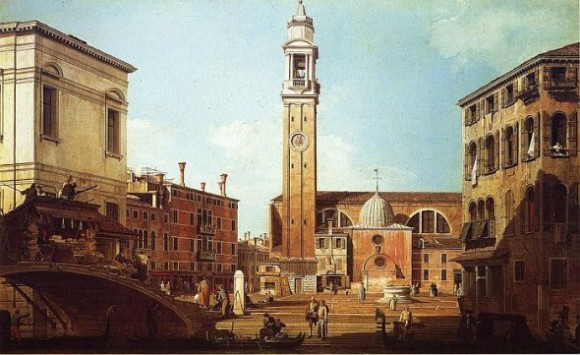
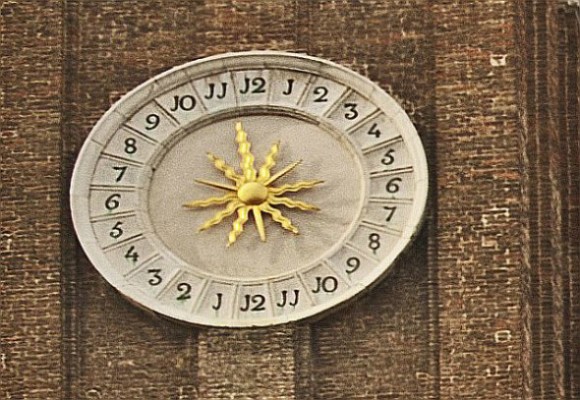
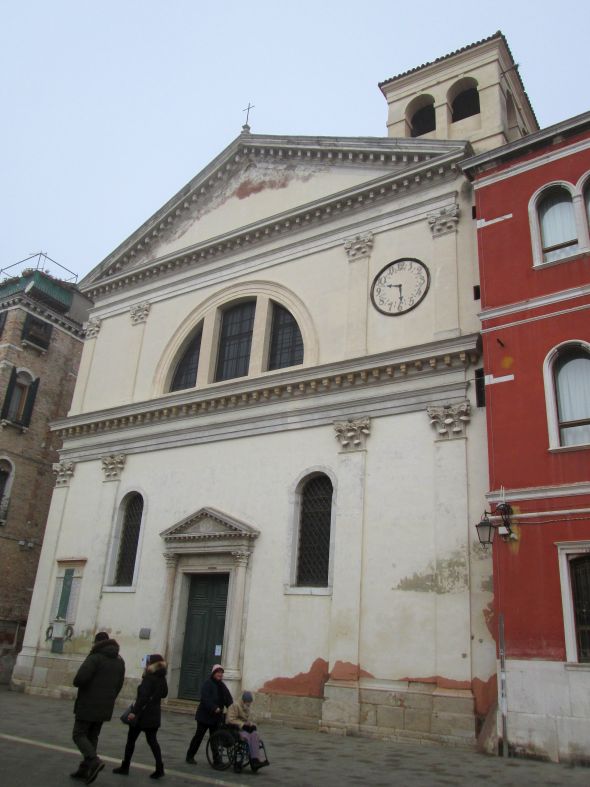
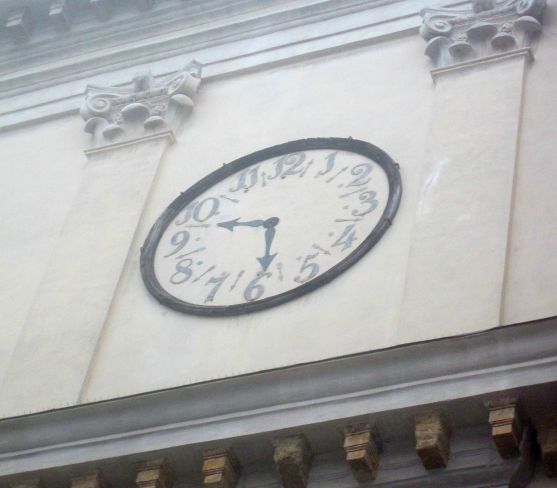

After the doges were let go in 1797 by the new management team of Napoleon and Satan, there was a very unhappy lull in Venetian history. It was an unhappy lull even while it was happening, before it became history.
And it wasn’t what I’d really call a lull, either, unless you call being put to bed with dengue fever a lull.
This interval of tyranny and anguish was abruptly cut short on March 22, 1848, when the Venetians revolted against Austria, which had acquired Venice from France in a diplomatic trade-off immortalized in the Treaty of Campo Formio (October 18, 1797). Cleverly, Napoleon effected this trade only after he had disemboweled the former Queen of the Seas, carrying off wagonloads of treasure and razing palaces, churches, convents and scuole (thereby making more treasure available for his waiting wagons).
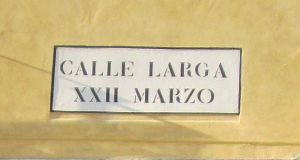 The man who led the uprising and the brief establishment of the Republic of San Marco was a Venetian lawyer named Daniele Manin. I’ve outlined the story in another post, so I won’t go over it again. I would just appreciate your pausing for a moment to consider the magnificence of this doomed attempt and the people who put everything into it.
The man who led the uprising and the brief establishment of the Republic of San Marco was a Venetian lawyer named Daniele Manin. I’ve outlined the story in another post, so I won’t go over it again. I would just appreciate your pausing for a moment to consider the magnificence of this doomed attempt and the people who put everything into it.
And just think: Only twelve years later, the Austrians were gone. I’m not capable of determining to what extent 1848 led to 1861, but I still want to give my own puny recognition of a huge event which everyone by now just takes for granted, I guess.
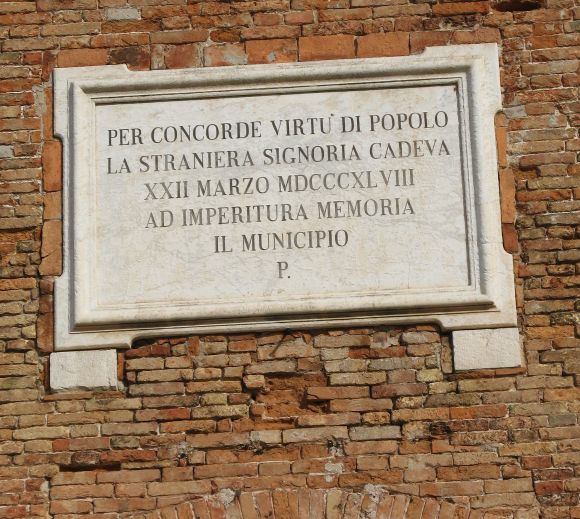
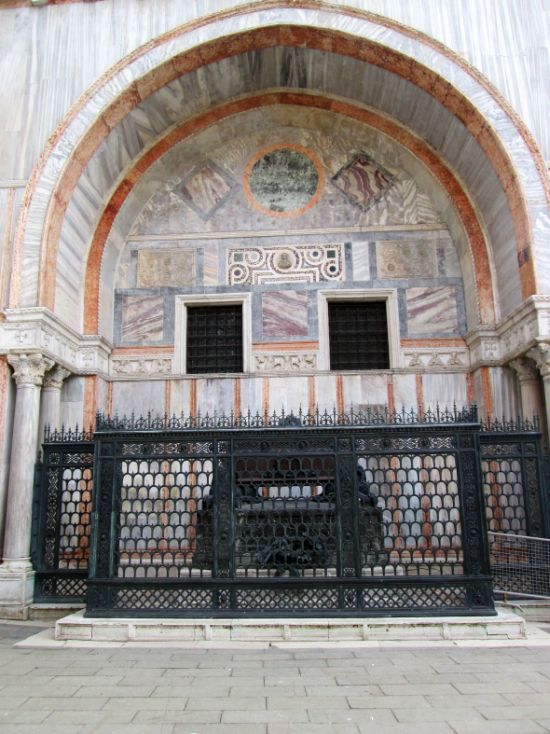
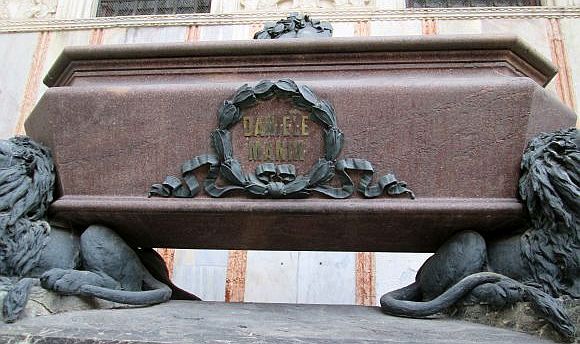
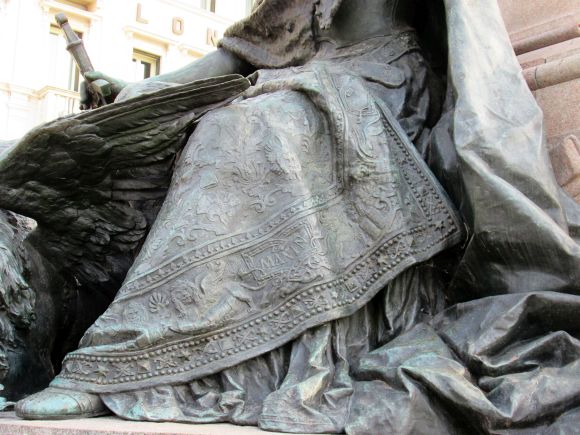
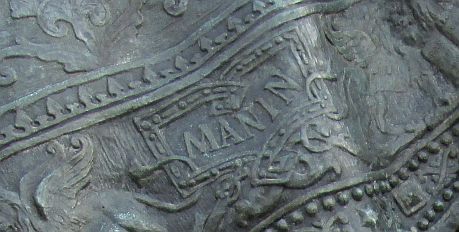
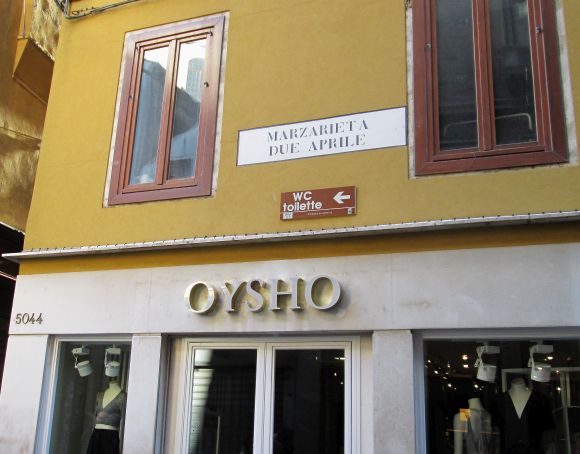
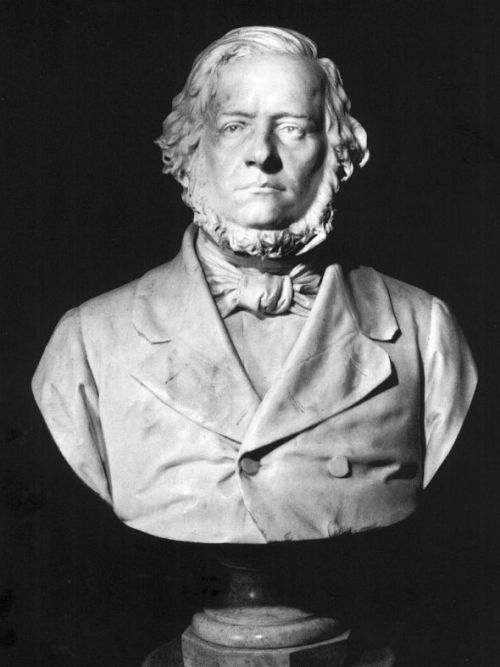
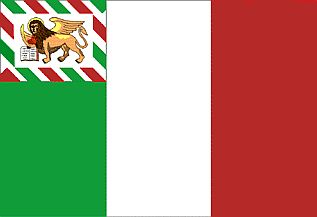
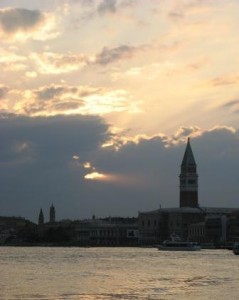

On October 2 at 6:53 PM, the news broke upon an unsuspecting city — and even some unsuspecting city councilors — that the local headmen had cooked up a new scheme: Officially proposing Venice as the site of the 2020 Summer Olympics.
I’ll pause while you adjust your screens.
Technically speaking, “Venice Olympics” wouldn’t necessarily connote the same thing as “Venetian Olympics.”
The “Venetian Olympics” would consist of any typical activity of any typical day in almost any typical week. Medals would be awarded for such events as:
Actually, I think the “Venetian Olympics” could be a spectacular event, for those in the right frame of mind, and best of all, they could be held any day of the year, practically.
But I am only slightly jesting. The headmen, on the other hand, are completely serious. That’s because they are: Massimo Cacciari, the mayor; Giancarlo Galan, governor of the Veneto Region; Franco Manzato, regional vice-president AND councilor for Tourism; and Andrea Tomat, president of Confindustria Veneto, the regional business association. Politicians and businessmen — it’s the winning team in most Olympic efforts, I have no doubt. And as soon as Madrid lost its bid to Rio, thereby re-opening the field to a European candidate for the next go-round, Venice pounced.
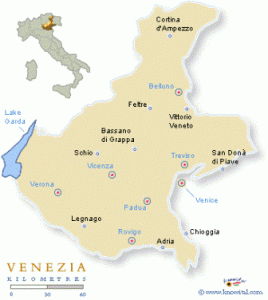
But “Venice Olympics” is a loss leader. What they mean by “Venice Olympics” translates into “Olympics scattered around the Veneto region.” Everybody wants to get into the act.
The only foreseeable competitor in Italy would be Rome, which hosted the Games in 1960 (perhaps a handicap, though capital cities seem to do well). I”m not sure what card Rome will be playing in an attempt to become the national candidate, but it’s true that they wouldn’t have to face the quips that almost certainly will soon be lobbed at Venice. I can imagine the helpful suggestions for organizing the pole vault over the campanile of San Marco; synchronized swimming in the Grand Canal; the hammer throw and shot-put aimed at the taxis churning along the Giudecca Canal. Field hockey in the Piazza San Marco.
Let me not blemish the euphoria by mentioning crass numbers; clearly the visions of new everything being built all across the region has got lots of people all worked up. I merely mention, at random, that the candidacy of Madrid, which made it all the way to the finals, cost the equivalent of $55 million.
And that’s just the cost of candidacy. Once you nab the Games, the real bills start to mount up. Brazil has budgeted $14 billion to host the Games in Rio. Venice has a few handicaps, in my opinion, in that regard: It’s already the most expensive city in Italy (this ought to really lure spectators), and it has made a career of rattling its tin cup, wailing that it has no money. But… but… If there is no money for schools, monument restoration, policemen, hospitals, firemen, and so on, how can they suddenly find millions — gosh, it was right here behind the Encyclopedia Britannica all the time — and be prepared to expend billions, if they get the nod? (That was a rhetorical question.)
The notables who have spoken have been refreshingly direct about why they want the Olympics. Skipping entirely any mention, however brief, of desiring to add to the glory of Italy, or the honor of the city, or the splendor of our athletes (somebody did refer to that, I think, but I can’t see how that matters), they’ve gone right to the point.
“Promoting and organizing the Games of 2020 would permit the city and the entire metropolitan area represented by the triangle of Venice, Padua and Treviso (italics mine) to accelerate the numerous improvement and renewal projects which for years have filled the agendas of the institutions of the territory,” said Mayor Cacciari.
“Venezia 2020 represents a strategic project for the development of the infrastructure of the entire Region,” said Dr. Galan. For the record, the entire Region covers about 7,000 square miles.
“Our businesses realize that having the Olympic Games in Venice in 2020 could act as a catalyst for a series of ‘virtuous’ processes in the economic field and help the consumer regain confidence,” said President Tomat.
But don’t break out the Prosecco just yet. First of all, Rome isn’t going to shrink from the fight — au contraire. This was the home of the gladiators, after all; also, the mayor of Rome belongs to the right wing of the political spectrum, while the mayor of Venice is from the left. They’re used to fighting. So, like every war, this brewing conflict has a long history and many undetected combatants.
And a few cautious voices — important voices — have sounded their notes of warning amid the chorus of praise for this audacious notion.
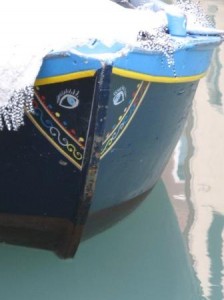
“Extremely important economic guarantees are going to be needed,” commented the head of the Italian Olympic Committee (CONI), the group which will adjudicate which city carries Italy’s banner into the final selection. Not a very heartening public statement, though unusually honest. They were polite enough not to refer to the recently (finally) completed Ponte della Costituzione (“the Calatrava Bridge”), which required 11 years, many lawsuits and an impressive cost overrun (final cost: $18 million compared to the $10 million quoted in the winning bid), to span 265 feet of the Grand Canal. But an Olympic Stadium ought to be a lot simpler.
“It would undoubtedly be a great opportunity for the entire Veneto [there we go again] to furnish itself with facilities adequate to such an event which would then remain at the disposition of local groups….It would require an enormous investment with the complete participation of the government as well as the industial sector,” remarked Renzo Di Antonio, president of the Olympic Committee’s Veneto division.
“As a Venetian I couldn’t be anything other than happy at this proposal,” said Andrea Cipressa, fencing gold medalist and vice-president of the national fencing association. “Naturally, on the real feasibility of the project I feel some understandable doubts….There are many, many things to take into consideration and the first impact of the proposal is mainly emotional, romantic. But then you have to start taking reality into account as well as the many problems which are always connected with Venice.”
But perhaps he has failed to grasp the magnitude of the marvels which the Olympics would bestow on the Region (excuse me: ENTIRE Region], especially right around Venice, innovations which have already been discussed for quite a while in the government:
“I believe that Tessera” (the village near the airport) “has all the necessary potential,” said Laura Fincato, councilor for Urban Planning. “We are discussing an area which would have a multilateral potential — an area of recreation including a new building for the Casino, a stadium, a concert hall and an structure for all sorts of sports. In this area there is also the airport and the [future] passage of the high-speed railway [the TAV Corridor 5 which will connect Kiev to Lisbon, passing through northern Italy]. If we then add a forest of 105 hectares [260 acres], it seems to me that we have all the right conditions.” A forest?? Now that’s something that’s really been missing from the urban fabric. We don’t have enough firemen — we don’t even have a breakdown lane on the Liberty Bridge. But a forest by the airport? Why didn’t anybody think of that before?
The mayor of the nearby beach resort of Jesolo is already jumping up and down and waving his hand: “We could hold the windsurf and beach volley competitions,” is his contribution to the discussion.
Paradoxically, though, the rowing competitions would be impossible to hold in the lagoon, due to the tidal currents. Sailing in the Adriatic ought to work, but rowing would have to be somewhere else. That’s going to be a little tricky for the public relations work. Maybe they could dig the rowing basin in the forest by the airport.
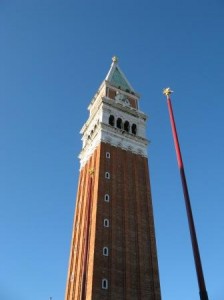
One commentator, Tiziano Graziottin, sees the big picture this way: “However you look at it, there are many obstacles on the horizon to overcome; the ‘tripartisan’ group put into play by Cacciari, Galan and Manzato… looks at Venice as the figurehead of an entire Veneto system, using the icon of the most beautiful city in the world to fascinate world public opinion while aiming at developing the potential of an entire macro-region… Venice is the star that drives photographers crazy but the Olympic ‘film’ succeeds only if all the actors play their part under the highest-quality direction…. The good thing about this idea is the concept behind it, and it’s a key concept for ‘internal use’: To make clear to a public opinion frequently divided into provincial (in every sense) rivalries that Venice and the Veneto can and must march together.” For those numbed by the endless bickering between Dr. Cacciari (center-left) and Dr. Galan (center-right), this is a revolution. “Bipartisan” isn’t a word you hear used very much; in Italian, it’s a knobby little word (bipartitico) which doesn’t really have a home in anyone’s vocabulary. I think it must sleep in the political garage.
A closing note — more like a shot across the bow — from the ever-contrarian lawyer, Francesco Mario D’Elia, who has organized four (4) referendums with the aim of separating Venice from Mestre, all of which failed, but not by so much. He has now organized a committee called “No to the Venice 2020 Olympics.”
“To propose Venice for the Olympics,” he stated, “is merely an operation involving the image, in order to exploit the fame of the city without giving anything in return…. Therefore we say ‘Enough’ to those who exploit the name of Venice, a city which has no need of the Olympics.”
So he has wasted no time in writing to the governor of the Region of Sicily saying that there’s a small group in Venice ready to support their candidacy for the Olympics, presumably at Palermo. “The Palermo Olympics.” That sounds even stranger than The Venice Olympics.
In all, a fairly audacious gamble, which will require betting millions of somebody’s money to play a hand which may not turn out to be as strong as its holder might imagine. Venice isn’t in the habit of competing, really — people come here anyway, whether you invite them or not. As a historic, artistic and even touristic city, who would it compete against? So having to think as a global competitor for anything is going to be a short sharp shock to a few people here. Especially when they come up against other potential candidates such as Cape Town and Mumbai and St. Petersburg.
But that’s the point of gambling — you’re ready to take a chance. Perhaps it will turn out that this whole Venice Olympics business is going to be less like a game of poker or mah-jongg and more like a long and unfathomably expensive session of “Risk.”